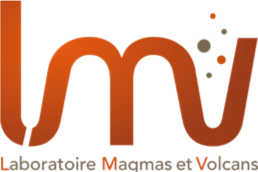Membres:
Tim Druitt The team has involved PhD students (Gareth Fabbro, Taya Flaherty) and postdoctoral fellows (Anita Cadoux, Maxime Mercier, Madison Myers), with collaborators at ISTO (Orléans), CRPG (Nancy), EOS (Singapore) and Athens (Greece).
Objectifs :
To petrologically map the architecture of magmatic reservoirs beneath Santorini and to compare the results with those of recent high-resolution seismic tomography. To use the information preserved in crystals and their glass inclusions to reconstruct the pressure-temperature-time paths of melt batches prior to Plinian eruptions and during inter-Plinian periods. To test current models of the behaviour of arc magmatic systems and the generation of large upper crustal bodies of eruptible magma.
Recent work at Santorini caldera has revealed a story of the processes and timescales of construction of upper crustal magma chambers prior to large (Plinian) caldera-forming eruptions. The silicic melts erupted during such events are generated in the middle to lower crust, where they are incubated over many thousands of years. Then, starting a few centuries prior to eruption, the melts are believed to be transferred upwards to the upper crust in high-flux events where they amalgamate to form a magma chamber near the top of the sub-caldera pluton. During ascent, decompression and cooling, the melts grow crystals that are preserved as phenocrysts in the subsequently erupted magmas. The upper crustal magma chamber is then discharged shortly afterwards. This work has contributed to a new paradigm in igneous petrology: that large magma chambers are transient features generated on timescales that are much shorter than the preceding repose period. It is speculated that these melt-transfer events take place when the sub-caldera pluton becomes unstable and compacts under gravity, squeezing the melts upwards. We are currently collaborating with mathematicians at Imperial College London in the development of models of compaction-driven permeable flow to explain the processes and timescales inferred at Santorini.



